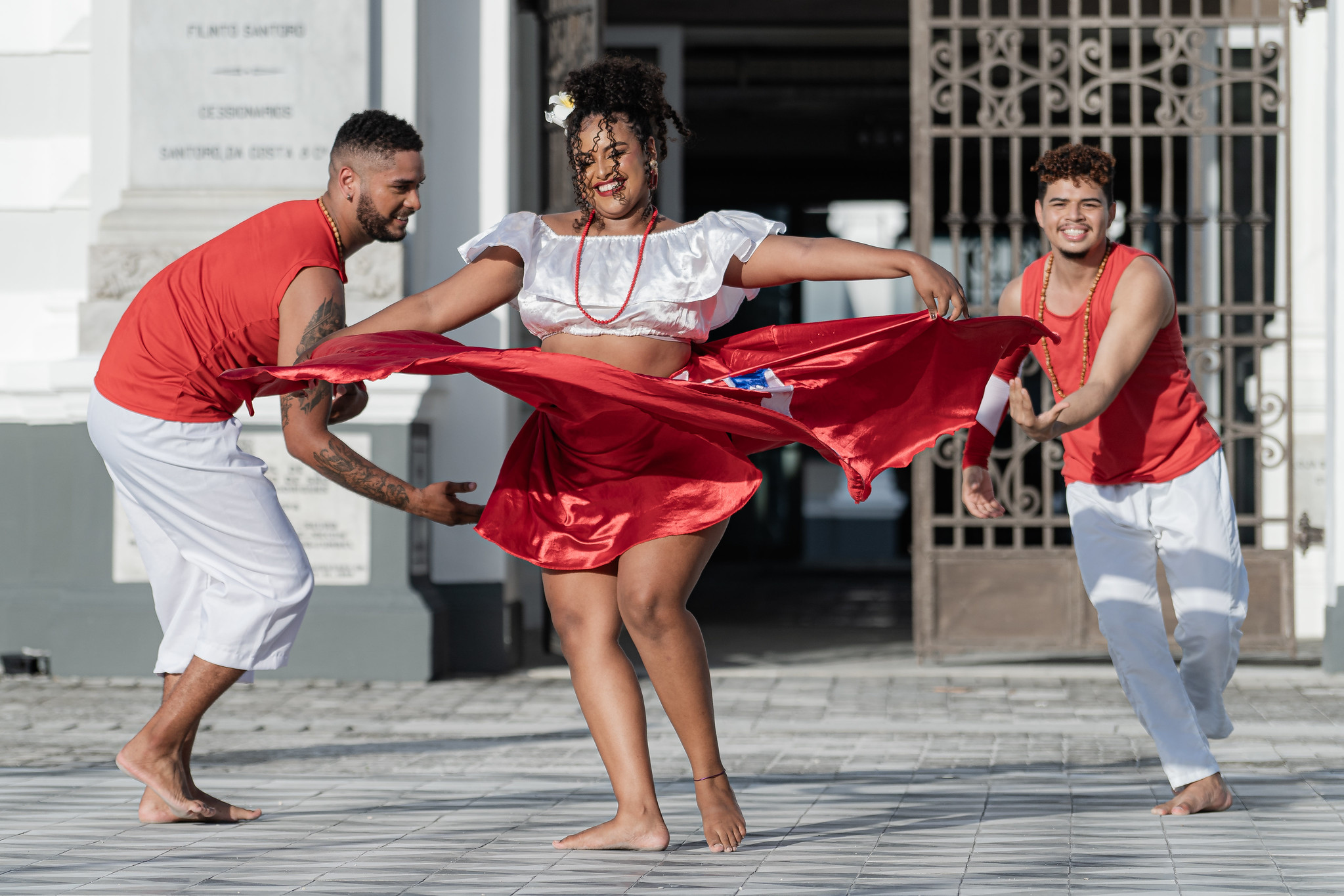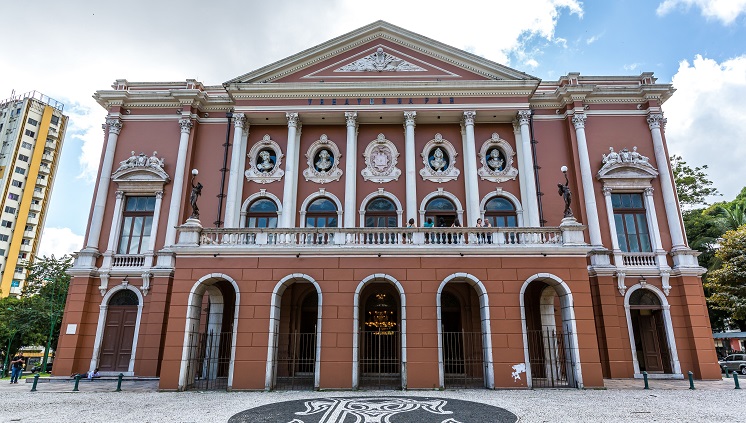Belém showcases the strength of its popular culture worldwide
In the final installment of the series, explore the traditions that make Belém a cultural hub—from the Círio de Nazaré festival and carimbó dance to tecnobrega music and museums, and more

By Maiva D’Auria | COP30
The capital of Pará beats to its own rhythm, with an identity shaped by popular traditions, music, dance, and vibrant colors. In the third and final episode of the “Belém to the World” series, we highlight some of the city’s most remarkable cultural expressions.
Among the most famous events is the Círio de Nazaré, the largest religious festival in Brasil and considered the Christmas of the people of Pará. Held in October, it brings together millions of people in processions, promises, colors, and excitement through the streets of the city (in 2024, the audience exceeded 2 million faithful). In 2013, the Círio de Nazaré was declared Intangible Cultural Heritage of Humanity by UNESCO (United Nations Educational, Scientific, and Cultural Organization).

Mr. Manoel Campos, a devout follower of the Virgin Mary, photographed the event for 15 years. To him, the Círio is more than a traditional procession; it is a renewal of faith.
"I've experienced the Círio since childhood, and showcasing it to the world brings me immense joy," he said. "Knowing that other people will have the chance to experience what it represents—living faith—brings me even more joy!"
However, faith is not the only force shaping Belém. Music and dance also play pivotal roles in the city's culture.
In music, two genres that carry the soul of Belém stand out: tecnobrega and guitarrada. Born in Belém, tecnobrega blends romantic brega music with electronic beats. Guitarrada, on the other hand, is defined by electric guitar solos that combine rhythms such as carimbó, merengue, choro, and rock.
Among the region’s traditional dances, carimbó holds a special place. Recognized as Intangible Cultural Heritage of Brasil, it is a mix of Indigenous, African, and European influences. In this dance, women twirl their colorful skirts while playfully courting their partners.

Mr. David Benedito dos Santos Barros, a popular artist known as Mano Piu, has the culture of Pará running through his veins. He performed with samba schools, brega bands, and folk groups before falling in love with carimbó—a rhythm that changed his life. As the founder of the group Carimbó Parásileiros, he has taken Pará’s culture to France and Chile and continues his mission to enchant audiences, strengthen carimbó’s roots, and celebrate the cultural identity of Northern Brasil.
“Sharing Belém’s culture with the world is an incredible opportunity to showcase the richness and diversity of our city,” Mano Piu said proudly. “Belém is a city that breathes culture. It has internationally recognized Amazonian cuisine, unique handicrafts, traditional dances like carimbó, lambada, and brega, and a welcoming people.”
He emphasized that Pará’s culture conveys a message of joy.
“We are a warm and hospitable people. We take great pride in who we are: a people who value our cultural heritage and our bond with nature. I believe our culture can send a message of hope and love to visitors, showing that it is possible to live in harmony with the environment. It is also a celebration of diversity and inclusion.”
And then, there are the museums. Belém breathes art through its cultural centers and venues. The Theatro da Paz, for instance, was the first performing arts house built in the Amazônia. Its grandeur, perfect acoustics, crystal chandeliers, mosaic hardwood floors, murals, dozens of works of art, and gold-leaf details impress all visitors.

The Forte do Presépio Museum tells the story of Belém’s foundation by the Portuguese in 1616. The Gem Museum highlights the richness of gems, minerals, precious stones, and jewelry inspired by Amazonian traditions. The Amazonian Navigation Memorial portrays the environment of the Amazônia and life on its rivers. Exhibitions of boats (life-sized and miniature), objects, photographs, texts, panels, and installations record the deep connection between local people and river navigation, which is still a vital part of the region’s culture and economy.
The Memorial is located within Mangal das Garças Ecological Park, another space brimming with culture and, of course, nature. Created by the Government of Pará in 2005, the park covers 40,000 square meters on the banks of the Guamá River, near Belém’s historic center. It offers attractions such as the Belém Lighthouse (a 47-meter tower with observation decks at 15 and 27 meters), the River Overlook, a butterfly house, and artificial lakes where herons, ducks, and turtles coexist.
In 40 days, COP30 will bring the world’s attention to the Amazônia. And Belém will be ready—with its voices, flavors, rivers, struggles, and people—to show that the sustainable future also speaks with a Northern accent.
English version: Trad. Bárbara Menezes.
Proofreading by Enrique Villamil.
